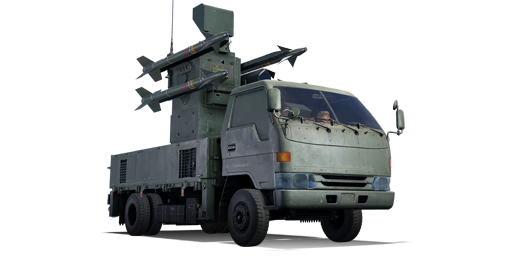




Due to the need for extensive air defense, Nationalist forces stationed on Taiwan had acquired the MIM-72 Chaparral systems and its M730 launcher vehicle as their field air-defense systems throughout 1986 to 1987 (or ROC Year 75-76). While the system received upgrades for its missile with new seekers by the late 1980s, the vehicle was deemed obsolete by the 1990s due to its introduction date way back in 1969. Also in 1990s, the development of Indigenous Defense Fighter (or, AIDC F-CK-1 Ching-Kuo) also brought in the domestic TC-1 IR AAM for ROCAF; however the abundance of AIM-9P4 and AIM-9L also proved problematic since ROCAF need a way to "dispose" the TC-1s with more than 1000 missiles in reserve (with provision for 250 F-CK-1 jets). NCSIST revised the TC-1 missiles for ground-based systems with domestic FCS and various vehicle platform to minimize the modification cost for the system; eventually ROCAF opted for the design with Toyota Dyna U100 truck over CM32 or HUMMEV as the new short-range SAM, now known as the Antelope (捷羚防空飛彈系統; or officially the 車載劍一防空飛彈系統) which was named after one of its engineer, Ms. Hsia Chieh-Ling (夏捷羚). Disclosed in the 1997's annual military exercise and entered service in 2005, Antelope served alongside with the Chaparral as the final layer of air defense of the island of Taiwan.
Introduced as part of Update "Dance of Dragons", Antelope can be said to be the domestic alternative to the US-built Chaparral systems, now equipped with TVD and a radio-rangefinder. While the range is very similar to Chaparral, with only 2.5 km at most for head-on locks, the overall performance of TC-1L with IRRCM can make sure enemy jets face a miserable end as soon as they are tracked from the rear.
| Ammunition | Type | Armor penetration (mm) at a distance: | |||||
|---|---|---|---|---|---|---|---|
| 10 m | 100 m | 500 m | 1000 m | 1500 m | 2000 m | ||
| AAM | — | — | — | — | — | — | |












Mobility | |
|---|---|
Protection |
|---|
Firepower | |
|---|---|